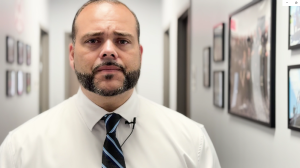The True Cost of Unskilled Cleaners
When budgets are tight, it’s tempting to cut costs by choosing the lowest bidder for commercial cleaning services. After all, cleaning seems like a commodity — anyone with a mop, bucket, and vacuum should be able to keep things looking decent, right?

Roberson Murillo is the Director of Operations for Sparkle Edge Cleaning Service.
“I come across this misconception all the time,” says Roberson Murillo, Director of Operations for Sparkle Edge Cleaning Services. “And it can be a costly one.”
But the reality is very different. A “cheap” cleaning contract often ends up as one of the most expensive decisions a property manager can make — because the hidden costs show up in tenant turnover, repairs, liability, and reputation. The surface-level savings evaporate quickly when you consider the downstream consequences.
7 Ways Unskilled Cleaners Cost More Than They Save
1. Damage to Property or Surfaces
The Problem
“Unskilled cleaners often lack training in the proper use of cleaning chemicals and equipment,” says Murillo, Sparkle Edge’s Director of Operations. They may use harsh products on delicate surfaces, scratch glass with the wrong tools, or skip critical maintenance like dusting HVAC vents. Over time, this can lead to damaged floors and furniture, and grime buildup in hard-to-reach areas.
The Real Cost
Property managers face expensive repairs or replacements: replacing furniture, carpets, or repairing scratched glass. Preventive cleaning done properly would have preserved those assets, but now the building owner is stuck with premature capital expenses.
2. Loss of Business Due to Poor Appearance
The Problem
The appearance of a commercial property is directly tied to tenant and customer perception. Dirty lobbies, smelly restrooms, or dingy hallways leave tenants frustrated and visitors unimpressed. Poor cleanliness immediately erodes trust and sends customers elsewhere.
The Real Cost
Property managers may lose tenants sooner, face higher vacancy rates, and have to spend more on marketing and broker commissions. Businesses within the property may also lose revenue, and negative online reviews can scare away new prospects.
“What looks like “just dirt” becomes a revenue and retention problem,” says Murillo.
3. Safety, Health-Related Compliance
The Problem
In regulated environments — like healthcare facilities, food service locations, and laboratories — cleanliness is more than an appearance issue. It’s a compliance requirement. Unskilled cleaners who cut corners can easily trigger violations during inspections.
The Real Cost
The financial consequences are steep: fines, forced shutdowns, lawsuits, or even the loss of licenses. Beyond money, failing inspections damages credibility and can permanently harm a facility’s reputation.
4. Increased Liability from Safety Hazards
The Problem
Poor cleaning often means wet floors left without the required warning signs, spills missed in hallways, or clutter left in common areas. These oversights create dangerous slip-and-fall conditions or block emergency exits — all of which are violations of OSHA workplace safety standards for hazard communication and walking-working surfaces.
The Real Cost
One liability claim can wipe out years of “savings” from a cheap cleaning contract. Property managers face higher insurance premiums, legal fees, and potential settlements. Even without lawsuits, tenants and visitors who don’t feel safe are less likely to renew leases or return.
5. Damaged Reputation
The Problem
Cleanliness directly influences how tenants, visitors, and the public perceive a property. A neglected space leads to whispers in the tenant community, frustrated conversations with brokers, and worst of all — negative online reviews or unflattering social media posts.
The Real Cost
Reputation damage reduces demand for space, lowers occupancy, and can even drag down the property’s market value. Every negative comment or photo posted online makes leasing harder and increases turnover.
6. Pest Infestations
The Problem
“Food scraps in trash rooms, crumbs in break areas, or neglected corners are breeding grounds for pests,” says Murillo. “Cleaners who skip deep cleaning in these spots, making infestations all but inevitable.”
The Real Cost
Rodents, cockroaches, and insects don’t just disgust tenants — they cause real financial harm. Property managers face extermination costs, potential health violations, and reputational damage that discourages leasing.
7. Faster Furniture and Fixture Replacement
The Problem
Dust, grime, and moisture accelerate the aging of furniture, blinds, carpets and other hard surface floors. Without consistent, professional cleaning, finishes fade, fabrics deteriorate, and materials break down long before their expected lifespan.
The Real Cost
Instead of replacing items every 8–10 years, property managers may find themselves replacing them in half that time. Multiply that across a large building, and the savings from a cheap cleaning contract vanish in a flood of early capital expenses.
The Bottom Line: Unskilled Cleaners Are Expensive
“On paper, hiring a low-cost cleaning provider looks like an easy way to save money,” says Murillo, “but the reality is the opposite.” The true costs show up in property damage, lost business, compliance failures, liability claims, pest problems, and reputation hits.
Property managers who invest in high-quality commercial cleaning aren’t just paying for mops and vacuums — they’re protecting the long-term value of their assets, preserving tenant satisfaction, and avoiding hidden costs that can far exceed the price of the cleaning contract.
About Sparkle Edge Cleaning
We offer commercial property managers a trusted cost-effective cleaning partner who keeps their buildings spotless, compliant, and tenant-ready while staying on budget — impressing owners, visitors and tenants alike without wasting time on day-to-day micro-management.
Learn more at SparkleEdge.com
